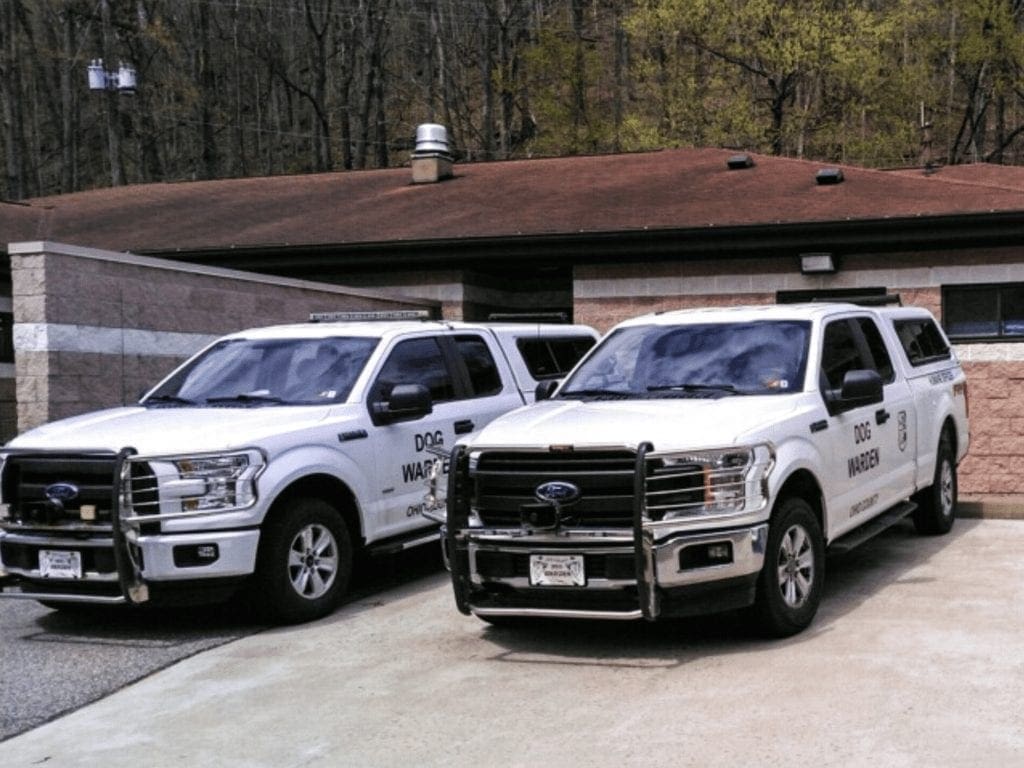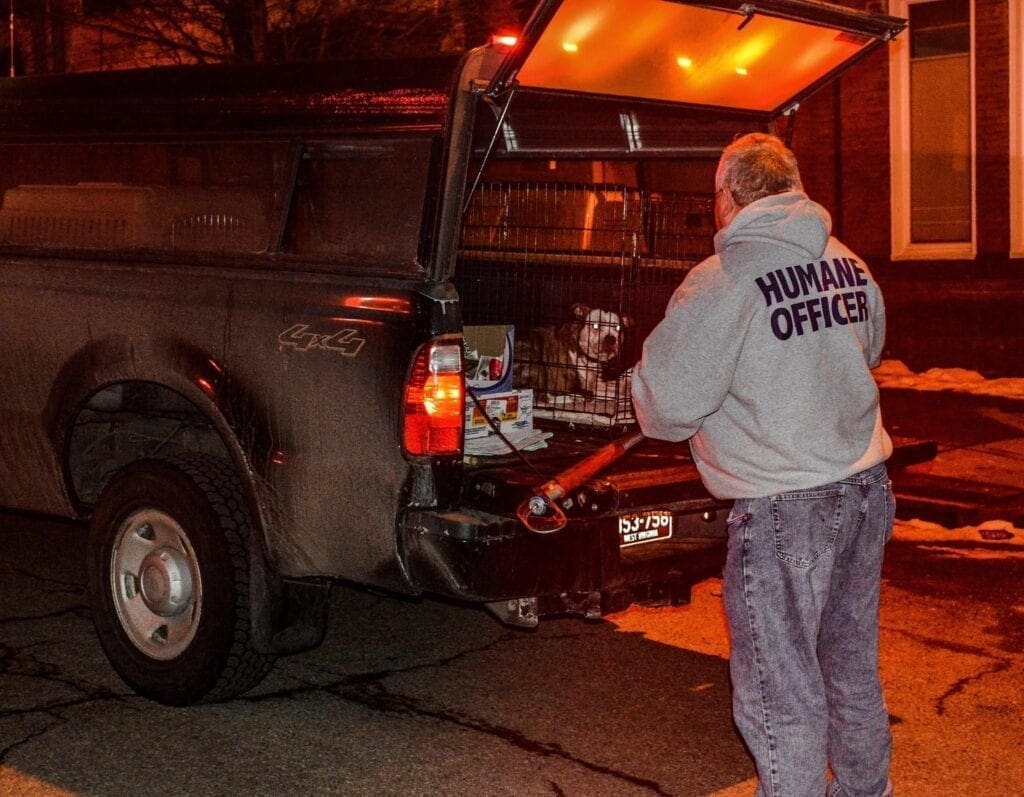For more than two decades, Doug McCroskey has cruised the roadways of Ohio County, and along the way he has attracted the sneers of a pessimistic impression that, unfortunately, accompanies his position.
These days, though, McCroskey barely notices those negative reactions unless, of course, he is accompanied by someone who wishes to get a glimpse of a “day in the life of the county dog warden.”
“I just ignore them. Seriously, I ignore them,” he claimed. “It is unbelievable when I do have someone with me because sooner than later they always say, ‘Man, the looks you get.’ And then there are the people who just yell at you calling you the ‘dog catcher.’ That bothers me a little, but I always say hi because maybe that will change their attitude.
“But what even drives me more nuts is when, say, I’m on Wheeling Island going to a call and people will bark at me. They bark, seriously,” he continued. “They stand on the corner and bark. When that happened for the first time, I couldn’t believe it, but it happens more often than anyone thinks. One day when I was stopped at a stop sign, I said to a guy who was probably in his 40s that, ‘I would expect that out of a 10-year-old, not a grown man.’ He didn’t know what to say back.”

A Long-Lasting Bad Rap
Mandated by state code, McCroskey’s job description is as follows:
The county dog warden and his deputies shall patrol the county in which they are appointed and shall seize on sight and impound any dog more than six months of age found not wearing a valid registration tag, except dogs kept constantly confined in a registered dog kennel.
There’s far more to it, of course, but the dog warden explained his predecessor was not pleasant nor gracious when going about his duties.
“I don’t think you’d be able to find a single person who remembers him as a nice person,” McCroskey insisted. “I know when I first took the job, it seemed like people expected the worst every time I showed up for a call about a dog, a cat, or a raccoon that wasn’t acting normal. The biggest difference between the former dog warden and me involves euthanasia practices, I believe, because it’s something I absolutely hate, but a lot of people believed he enjoy it.
“He was that image that everyone thinks about when they think about a dog catcher. People used to say that he would go out hunting loose dogs just so he could take them back to the pound and shoot them. And I can tell you that he did shoot dogs instead of doing it the more humane way because I saw it,” he said. “I know that was a long time ago, but I really do believe that reputation is still in place. So, when people see my truck coming down the road, I guess it doesn’t matter that it says, ‘Dog Warden’ and ‘Humane Officer’ on it because they think of me as the ‘dog catcher.’ And yeah, that bothers me sometimes.”

The Best and The Worst
Prior to serving as Ohio County’s dog warden, McCroskey was the Ohio County Jail Administrator for 12 years. Once the animal control position became available, however, he applied and was granted the transfer by the county commissioners.
During his tenure, he successfully lobbied for a new animal shelter that is now located along U.S. 40 in Triadelphia, and the adoption rate is consistently very high year after year. That is because the worst part of the job for McCroskey is what is referred to in state code as, “destroying” the animals.
“It’s a bad day for me, and everyone who knows me knows it,” he said. “Last year our dog euthanasia rate was 2 percent, and the rate for cats was 30 percent, but we take in cats like crazy. We take in many, many more cats than we do dogs. I’m hoping that percentage will go way down this year now that it seems the pandemic is not as bad as it was.
“What most people must not realize about me is that the best part of my job is working with the animals at the shelter and out in the public. Some say that it should be getting a dog or a cat a new home through adoption, but for me, it’s about the interaction with the animals,” McCroskey explained. “While I do enjoy it very much when the adoptions take place, I believe it’s more important to get those animals off the streets and getting them to the shelter because that’s where they are safe. At the shelter, the animal has a roof over its head, and it’s getting fed and receiving the medical attention it may need. When it’s on the street, the animal is getting none of those things.”

Two Dozen Years
While this humane officer has yet to encounter lions, tigers, or bears while on duty, McCroskey has captured rabid raccoons and snakes from inside Ohio County homes. The majority of the time, though, it has been all about dogs and cats.
One day, though, after a small kitten gained her freedom and took off into a storm drain, this “dog warden” took chase.
“The kitten stayed about three or four feet ahead of me, but I was determined that catch her and take her back to safety,” McCroskey recalled. “At one point, though, I could hear cars above me and that made me realize I was in the pipe that was under the roadway. That was the scariest day for me on the job because I realized that if something bad had happened, no one would have known where I was.”
But?
“Oh, I caught that kitten, and I got her back to the clinic.”
McCroskey owns many more memories of doing a job that normally has him on call 24 hours a day, and the increased popularity of the pit bull has doubled his duty over the past 15 years.
“There’s always been that one breed of dog that has scared people the most, and these days it’s the pit (bull),” he said. “But some of the meanest dogs I’ve run across have been the little ones. They can be really mean; trust me.”
When the calls come in, the Ohio County Dog Warden never knows what to expect.
“I’ve been on rooftops; I’ve been in buildings that only had half-floors because the other half has rotted away; and I’ve been in pretty sticky situations with rabid animals and very aggressive animals,” McCroskey added. “That’s why I always say that this job has become a real adventure, and that’s pretty true on a daily basis.”


